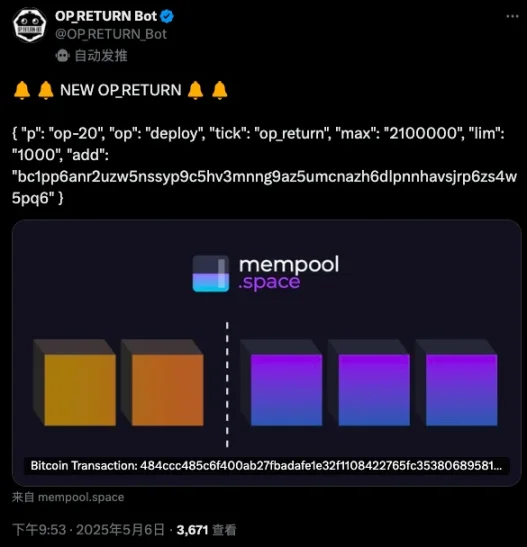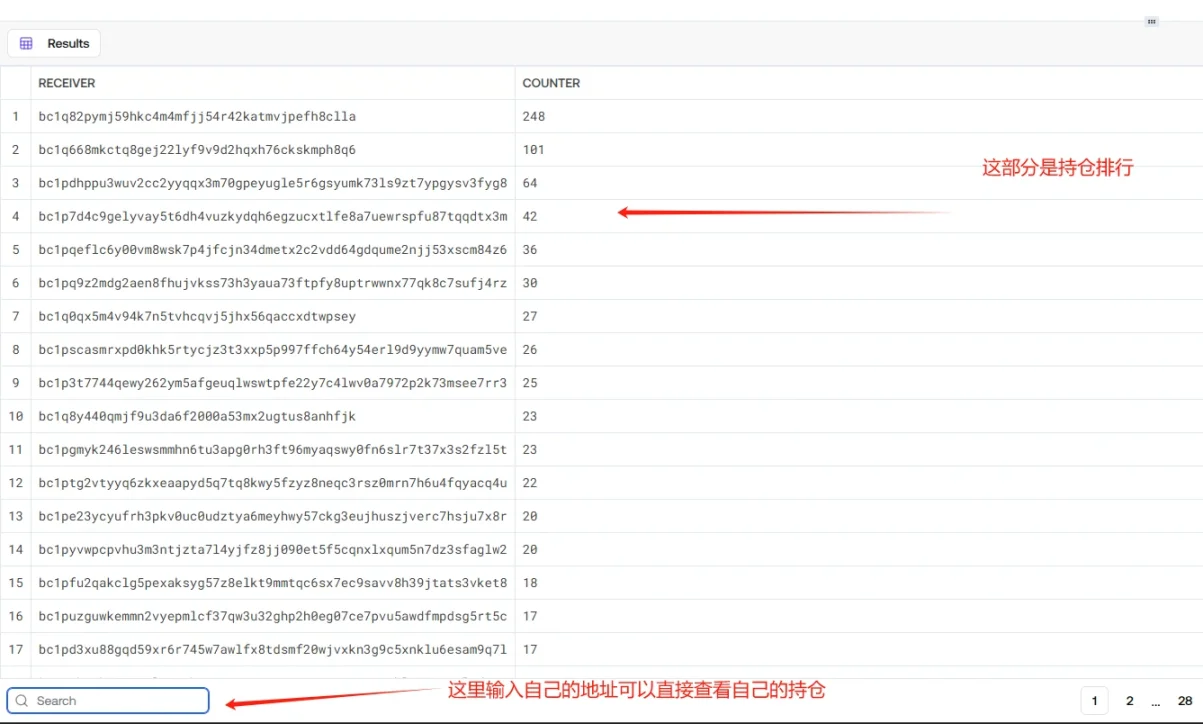With an increase of nearly a hundred times, why did Bitcoin’s “small upgrade” gain financial attention?

Reprinted from panewslab
05/08/2025·17DAuthor: Golem
The sleeping lion is about to wake up? This is the feeling of some players in-depth Bitcoin ecosystem in recent days.
A developer statement on May 6 shows that the next version of Bitcoin Core may abolish the OP_RETURN output limit that must not exceed 80 bytes. The statement stated that the upper limit of OP_RETURN 80 bytes is no longer suitable for current needs. First, it is easily bypassed, and some private mining accelerators do not implement these restrictions at all; second, it will form a distorted incentive mechanism, and some projects will incentivize some private services to bypass restrictions. At the same time, the statement said that the abolition of the upper limit of OP_RETURN 80 bytes has been widely supported.
At present, there has also been a token deployment format OP-20 that breaks the 80-byte limit of OP_RETURN. The off-market transaction price of the same name token has risen to US$400 per piece (1,000 pieces per piece), while the cost is only US$5-6 per piece.
Odaily Planet Daily will briefly introduce in this article what OP_RETURN is, what are the advantages and disadvantages of the Bitcoin network after successful upgrades, and what are the prospects for using this mechanism to issue OP-20.
The debate around OP_RETURN
In the Bitcoin network, OP_RETURN is a script opcode (opcode) specially used to carry arbitrary data in transactions. The data carried by using OP_RETURN output will not be referenced by subsequent transactions, nor will it occupy the UTXO space of the node.
In the early days, Bitcoin nodes had to permanently retain all unspent outputs (UTXOs). Malicious or uncontrollable data writing would cause node storage pressure. Therefore, in 2013, the community proposed the idea of "lightweight" data storage by adding an immediate void script. Then in 2014, Bitcoin Core version 0.9.0 officially included OP_RETURN output into the "standard output" type, and set the data upper limit to 40 bytes, and gradually increased it to 80 bytes to balance data writing requirements and network resource protection.
**OP_RETURN restrictions are no longer in line with the development
needs of Bitcoin ecosystem**
Therefore, the purpose of Bitcoin developers initially designed OP_RETURN was to prevent nodes from over-inflated storage due to processing scripts containing large chunks of data, using it as a "lightweight record of blockchain" function. However, with the development of the Bitcoin ecosystem, various asset protocols, project parties, L2 and cross-chain bridges need to record more and more data on the chain, and the 80-byte limit of OP_RETURN is gradually becoming constrained.
In order to meet project needs, various project parties have to bypass this restriction through various operations, including providing high rewards to miners. Therefore, Bitcoin Core core contributor Greg Sanders will issue a statement on GitHub, proposing to cancel the 80-byte cap in the next version of Bitcoin Core, allowing any number and length of OP_RETURN output.
He believes that the cancellation of the 80-byte cap brings at least two tangible benefits:
- Cleaner UTXO collection. Data can now be placed in a provingly unspentant output, rather than being disguised in spendable scripts or spread across multiple transactions.
- Consistency of behavior. Nodes can relay transactions that miners want to see, making fee estimation and compact block relay more reliable.
Opposition remains strong
But in fact, Bitcoin Core has not yet released the specific date for the next upgrade. At the same time, there are still many opposition voices under the GitHub that the statement has been upgraded.
Community member wizkid057 said that this is much more than a small technical change, but a fundamental change in the essence of the entire Bitcoin network. The Bitcoin network will become an arbitrary data storage system instead of developing as a decentralized currency. It will also make more data-intensive protocols (such as inscriptions, NFTs) and "jammed" data more widely.
If the upgrade has not been completed, issue coins first
However, although the next version of Bitcoin Core abolished the 80-byte upper limit of OP_RETURN, an update on the next version of OP_RETURN, is still unfinished, and the first token of the protocol, op_return, has been suspected to have been minted. The current off-site transaction price is US$400 per piece (1,000 pieces per piece), while the initial cost is only US$5-6 per piece, achieving a hundred times "floating profit".

op_return was suspected to be deployed by the address bc1p...4w5pq6 on the evening of May 6, with a total of 2.1 million, totaling 2,100 pieces. As shown in the following figure, the token deployment format is not essentially different from that of BRC-20, but there are more addresses in the json text (this may also be the reason why OP-20 exceeds the 80-byte limit).

Therefore, the format of casting op_return is as follows:
{ "p": "op-20", "op": "mint", "tick": "op_return", "amt": "1000", "add": "This is your Bitcoin address" }
The user pastes the text information on the OP_RETURN Bot website, and then uses Lightning Network to pay to create an OP_RETURN output to complete the casting operation. At present, the community speculates that op_return has been minted, but no official index or transaction transfer tools have appeared, and only double bets can be made on the off-market.
Regarding the index rules (that is, the rule that determines whether you hit or not), some community players have listed two situations: one is that batch minting is not allowed (that is, batch minting is too much for 1 transaction), and the other is that batch minting is allowed.

At the same time, some community players compared OP-20 with BRC-20, believing that OP-20 has no concerns about block size expansion and UTXO pollution, which is obviously superior to BRC-20. However, it should be noted that Bitcoin Core has not abolished the OP_RETURN 80 byte limit at present, so OP-20 cannot be packaged and put on the chain in principle. Users can only wait for MARA and f2pool, which may have lifted the OP_RETURN 80 byte limit on transactions.
In fact, although the attention is reduced, the Bitcoin ecosystem still has a group of firm community developers and players active. Odin.Fun, Alkanes protocol, etc. are all recent innovations, but in the end, they have not escaped the fate of heavy thunder and little rain. So it’s still a topic that is always a luxury. Relying on the expectations of the Bitcoin Core version upgrade, can OP-20 lead the Bitcoin ecosystem to rise? Let's wait and see


 jinse
jinse